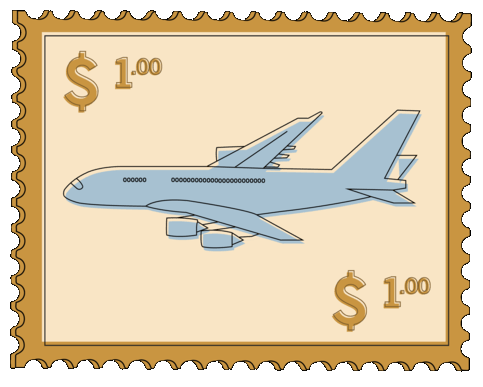Physics and Folly applies real world science to familiar and fantastic situations. Discover the answers no one has heard, to the questions no one asked.

I love getting packages in the mail. It makes me feel special somehow. As a result, when I was on eBay and saw a spidery tripod for my phone, and it was only one dollar with free shipping from China, I purchased without looking back. Recently, I received my little tripod, and it’s surprisingly great — but, all I could think about was how someone along the line has to be losing money on this. This thing was manufactured and then shipped via airmail to my very mailbox from halfway across the globe for less than six minutes of work at minimum wage. So, let’s dig into this. Can someone really turn a profit here?
First off, what is the cost of materials for our three-legged device? The tripod weighs 45 grams, and is mostly made of a fairly rigid plastic (probably high-density polyethylene for you materials nerds out there), which has a bulk cost of about $500 per tonne. Some simple math says our tripod costs roughly three cents in plastic. That’s not a lot, but remember, we do only have a budget of a single dollar.
Labour costs in the factory are hard to even put an estimate on. If the process is highly automated, there would only be the negligible cost of electricity. But, say each of the 36 individual parts on the spidery tripod requires two seconds of labour, one second to grab it from a mould, another to piece it together with the rest of the parts.
Workers in a factory in Shenzhen commonly have a salary of about $400 per month. That’s more than me, but I don’t work 12-hour days, or more than once a week. Regardless, that one minute of a factory worker’s time is worth about three cents, so total manufacturing costs would be roughly six cents.
Next, the tripod would need to fly across the Pacific Ocean, on a roughly 10,000-kilometre-long flight. The common practice is actually not to use cargo planes, but rather to fill the cargo holds of existing passenger flights with airmail. Since the flight was already going to happen, the only cost for the plane is the extra fuel that it needs to haul my package.
I found a number saying that on a 5,000-kilometre-long flight, having an excess of 1,000 kg of fuel costs an airline 150 kg of fuel. This seems like a lot of fuel to be talking about — and it is — but long-distance jet airliners carry a tonne of fuel. Many tonnes, actually. A completely dry Boeing 787 Dreamliner weighs 110 tonnes — and it has a fuel tank capable of carrying 111 tonnes of fuel. That’s right, on a fully fuelled 787, the jet fuel weighs more than the entire rest of the plane! Regardless, assuming fuel efficiency is roughly the same over a longer flight means that for every pound of stuff we haul across the Pacific, we have to burn a third of a pound in jet fuel. So, the plane burns about 15 grams of jet fuel hauling our tripod to Canada, which costs them about one or two cents.
The tripod would then be sent through the Canadian postal service. Because the package is being sent from another postal service, Canada Post will give them “terminal fees,” which are much cheaper than the postal fees you or I would have to pay. On top of that, China is recognized by the United Postal Union (UPU) as a “transitional country,” giving it even lower terminal fees on “letters” under two kilograms — which my tripod would be classified as.
Anyway, most of the dirty work of sorting packages and letters is done by machine, so it’s possible the only time my package will be touched by human hands since leaving the factory in China will be when the mail lady puts it in my mailbox. By the way, if she takes 10 seconds to bring her car to a stop, put my package in my mailbox, and then continue on her way, those 10 seconds of her time are the single most expensive part of the entire process — those 10 seconds represent about six cents of labour!
In reality, common shipping prices from China for a small international package is about 80 cents, and if we stick to our original guess of a six cent manufacturing cost, they’re making a 14 cent profit. All things considered, that’s pretty darn impressive.
Image: Simer Haer/The Cascade


